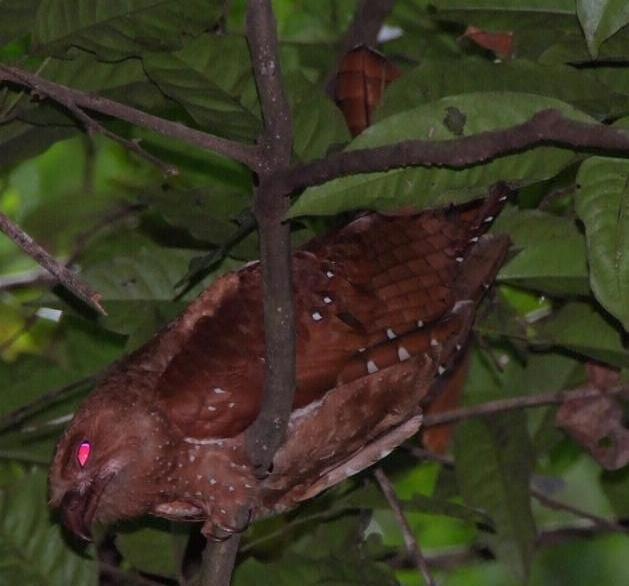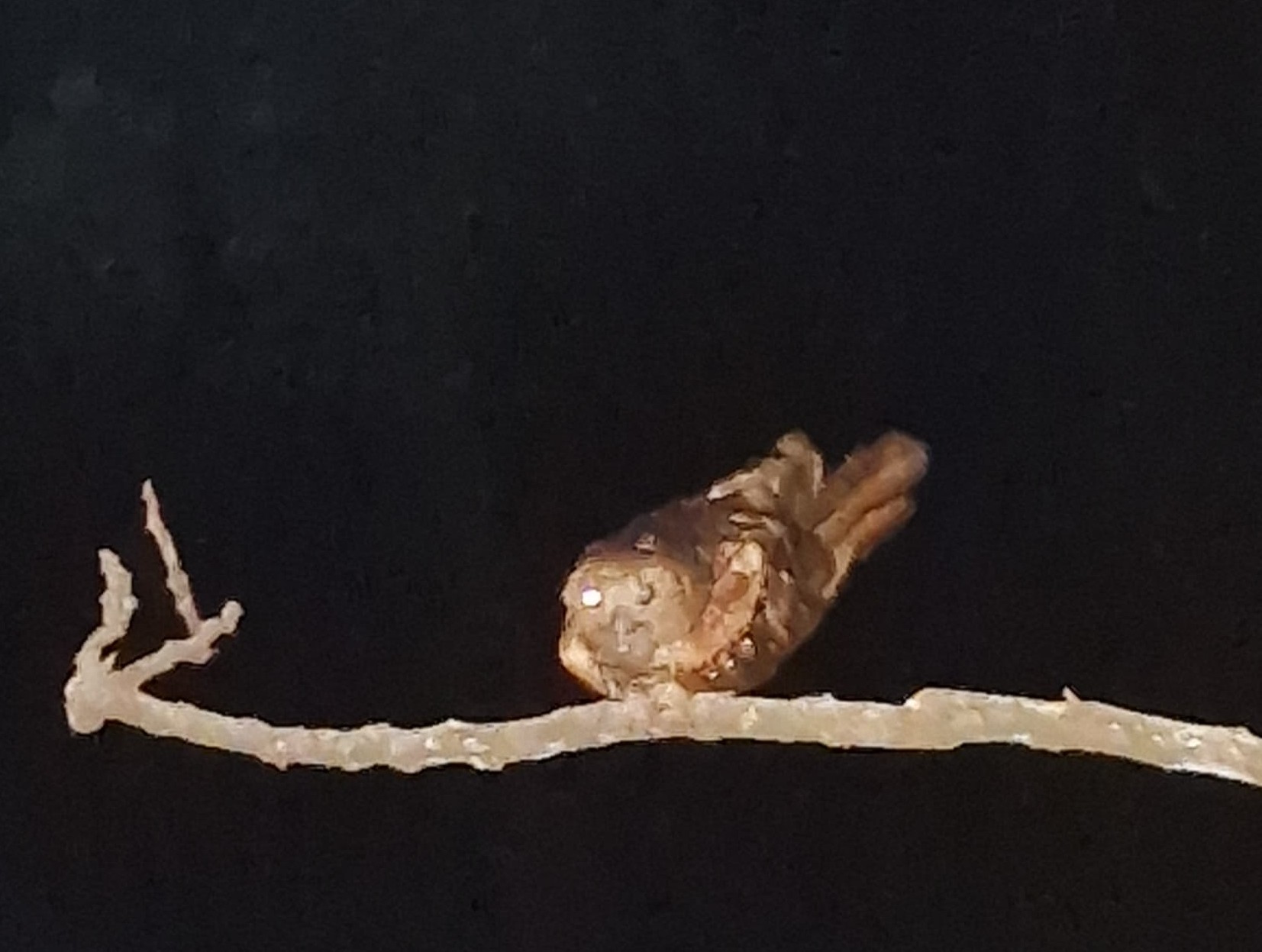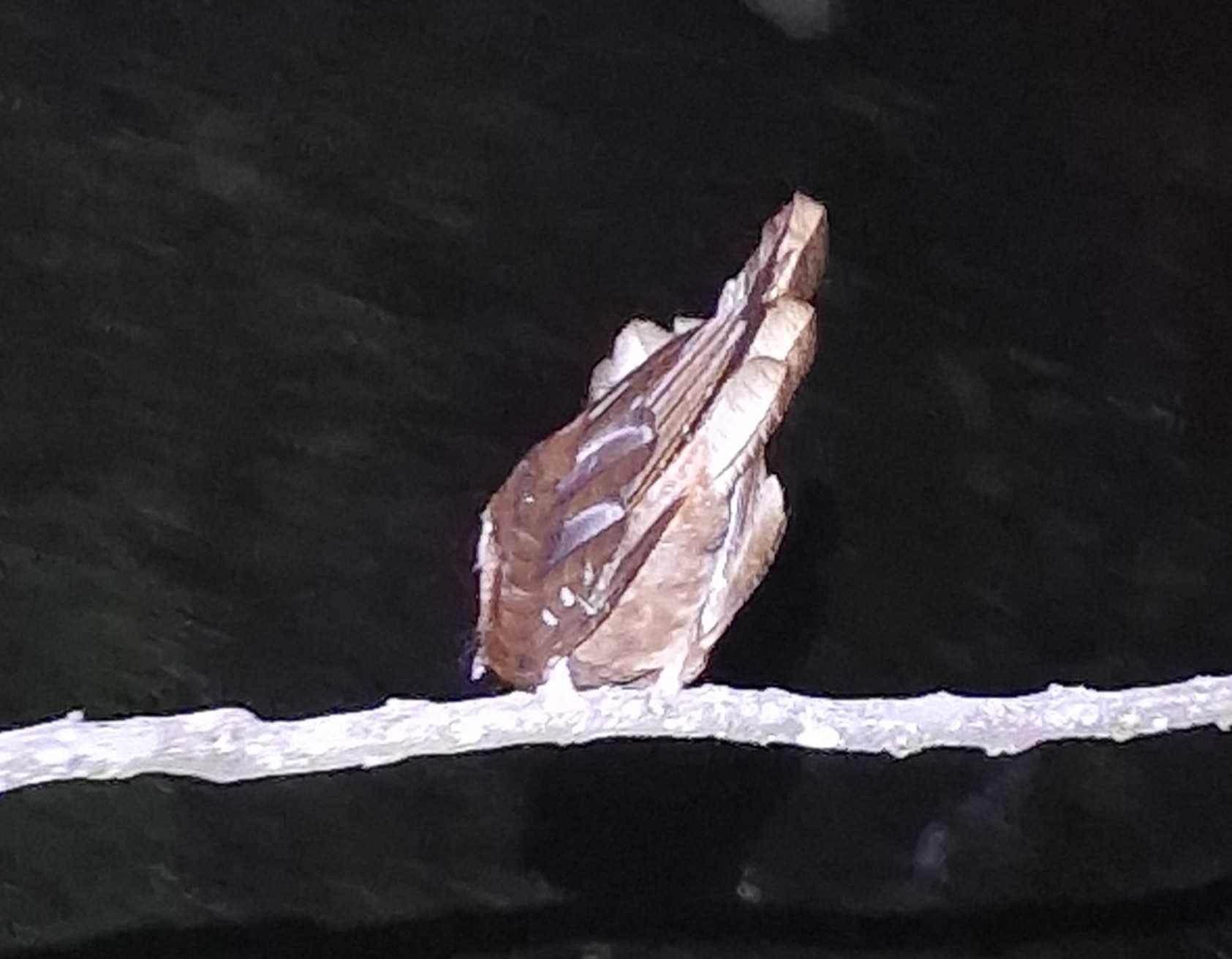 Oilbird (Steatornis caripensis)
Oilbird (Steatornis caripensis)
 Oilbird (Steatornis caripensis)
Oilbird (Steatornis caripensis) |
 |
| Pictures (click on them to enlarge) | ||
|---|---|---|
 © Paul Ouboter |  above Tapawatra Falls end Sept 24 © Giovanni Pansa |  second observation in Suriname © Giovanni Pansa |
| Oilbird: The bird normally breeds in large groups in caves and spends the day there. At night it flies for long distances (50 km) to find food, palm fruits that it takes from the tree while flying, so it has a vegetarian diet. It finds its way by echolocation, it listens to the reflection of the clicking noises it makes while flying, the same way bats orient themself and find their prey. The young birds are very fat, so Chaima indians in Venezuela used them as a source of oil, a habit that gave the bird its name. The bird was described in 1817 by the famous Alexander von Humboldt and his companion Aimee Bonpland when they visited the cave near Caripe in Monagas State in Venezuela (la Cueva del Guacharo). In Trinidad there is also a cave at the Asa Wright Centre. A picture of an Oilbird, made by Paul Ouboter in the Brownsberg nature reserve on the trail to the Witicreek, March 28, 2008. This is the first documented observation of an Oilbird in Suriname. The bird in Suriname might be a wanderer, but who knows, caves might be around somewhere in Suriname. Rumours are that they have already been seen in the South of Suriname. The bird on the photo perches on its short legs and on its breast on a branch shifting its position all the time, normally it will rest on rocks, also in this a bit awkward position, like it will fall over. The second observation with photos and vide are from Giovanni Pansa above the Tapawatra Falls 22-23 September 2024. A third observation was made by Fred Pansa at the brownsberg also in September. |
| Video (click the link or the 'play'-button to see) | ||
|---|---|---|
| Video recording of a Oilbird © ; |
|
|
||||||||||||||||||||||||||||||||||||||||||||
| Observations through the year | Observations of breeding through the year |
|---|---|
| The 1 reported observations of this bird in Suriname, mainly for the last 50 years up to 2018, have been grouped by month. More birds on one day are counted as one observation. Of course, if the graph should depict the total number of birds seen, the differences between the months could be much more pronounced. | The reported breeding observations of this bird in Suriname. Most observations are about nest with eggs, some about fledglings, or feeding at a nest or the building of a nest. Of the about 5000 nests and eggs found for all species together, about 1/3 comes from the egg collection of Penard between 1896 and 1905. For some reason most collecting then was done in the first half of each year, so the shown distribution does not necessarily reflect the actual breeding preferences. The main dry season in Suriname is reckoned to be from half August to the end of November, the main wet season from half April to half August, but the the timing of begin and end does vary from year to year. Around March a second dry season often occurs. |